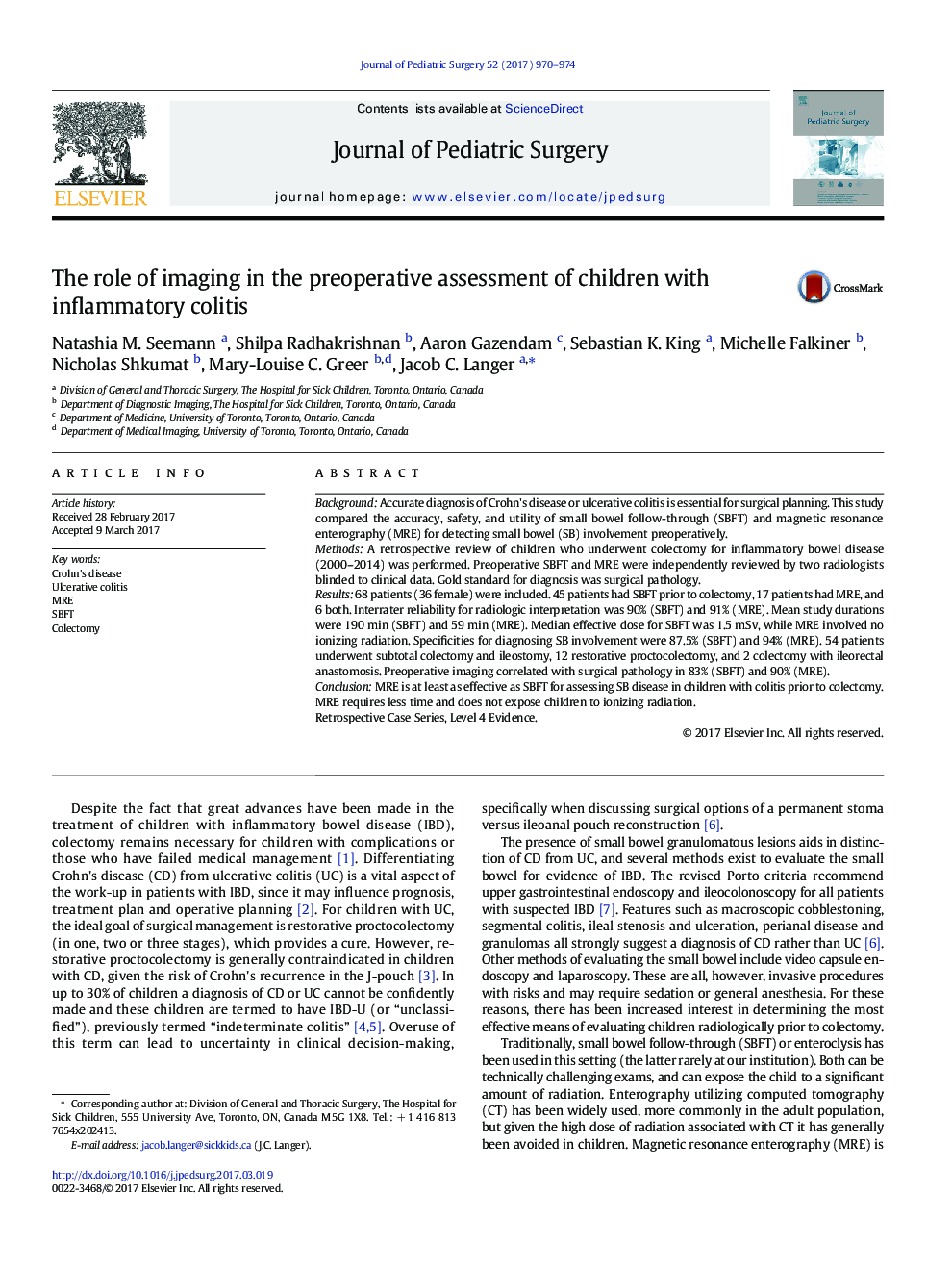| Article ID | Journal | Published Year | Pages | File Type |
|---|---|---|---|---|
| 5718502 | Journal of Pediatric Surgery | 2017 | 5 Pages |
BackgroundAccurate diagnosis of Crohn's disease or ulcerative colitis is essential for surgical planning. This study compared the accuracy, safety, and utility of small bowel follow-through (SBFT) and magnetic resonance enterography (MRE) for detecting small bowel (SB) involvement preoperatively.MethodsA retrospective review of children who underwent colectomy for inflammatory bowel disease (2000-2014) was performed. Preoperative SBFT and MRE were independently reviewed by two radiologists blinded to clinical data. Gold standard for diagnosis was surgical pathology.Results68 patients (36 female) were included. 45 patients had SBFT prior to colectomy, 17 patients had MRE, and 6 both. Interrater reliability for radiologic interpretation was 90% (SBFT) and 91% (MRE). Mean study durations were 190Â min (SBFT) and 59Â min (MRE). Median effective dose for SBFT was 1.5Â mSv, while MRE involved no ionizing radiation. Specificities for diagnosing SB involvement were 87.5% (SBFT) and 94% (MRE). 54 patients underwent subtotal colectomy and ileostomy, 12 restorative proctocolectomy, and 2 colectomy with ileorectal anastomosis. Preoperative imaging correlated with surgical pathology in 83% (SBFT) and 90% (MRE).ConclusionMRE is at least as effective as SBFT for assessing SB disease in children with colitis prior to colectomy. MRE requires less time and does not expose children to ionizing radiation.Retrospective Case Series, Level 4 Evidence.
